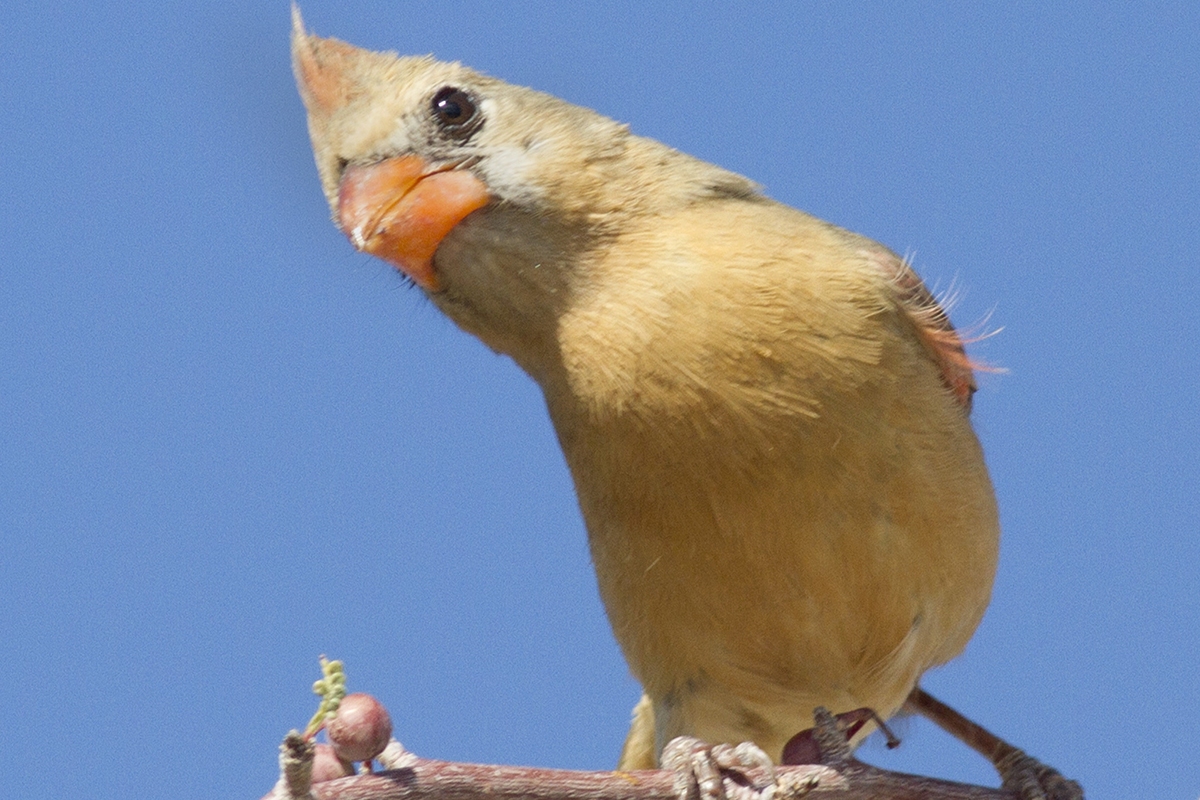Birdwatchers Are Flocking to Alabama to See This Bird: Why It's So Special
Birdwatchers are rushing to a town in Alabama in hopes of glimpsing a one-in-a-million look at a yellow bird, after a local resident posted images to social media of the bird feeding in her backyard, according to news reports.
So what's so special about this bird? It's a cardinal that has yellow feathers due to a rare genetic mutation that blocks its ability to assimilate red hues. The mutant bird is so rare that one ornithologist says that, if there were a million or so backyard bird feeders in the United States and Canada, just two or three would get a visit from one.
"There are probably a million bird feeding stations in that area, so very, very roughly, yellow cardinals are a one-in-a-million mutation," Geoffrey Hill, a professor and curator of birds at Auburn University in Alabama, told AL.com. [Of a Feather: Photos Reveal Stunning Birds of the Southwest]
This year, it seems, Charlie Stephenson, of Alabaster, is one of those extremely lucky birdwatchers. "I thought, 'Well, there's a bird I've never seen before,'" Stephenson told AL.com. "Then I realized it was a cardinal, and it was a yellow cardinal."

The unusual cardinal continues to visit Stephenson's backyard feeder, she said, adding that she wouldn't give out her address for fear that too many enthusiasts would flock to her yard.
But Stephenson's friend Jeremy Black, a professional photographer, did take advantage of the sighting and set up camp in her yard. After waiting 5 hours, Black captured gorgeous shots of the unusual visitor.
So, how did this bird get its yellow feathers?
Sign up for the Live Science daily newsletter now
Get the world’s most fascinating discoveries delivered straight to your inbox.
Like its red counterpart, this rare cardinal relies on the carotenoids (organic pigments) in its diet to turn its feathers a bright yellow. But diet isn't everything: Research has shown that certain genes determine which of several carotenoids the bird deposits into its feathers and bare skin.
For instance, red cardinals synthesize their red hues from four yellow or orange pigments they consume, according to research published in the journal The Condor in 2003.
In that study, researchers found that the plumage of a yellow Northern cardinal collected in 1989 in Baton Rouge, Louisiana, didn't show any of the red carotenoids found in common Northern cardinals. Assuming the yellow bird had access to similar foods as the red-hued ones, the researchers concluded that this bird couldn't manufacture any of the four carotenoids typically found in a cardinal's red feathers. A genetic mutation, they said, knocked out the bird's ability to carry out the chemical reactions that would have led to red feathers.
Though the "missing" pigments likely don't harm the birds' health, there is a downside to being yellow when all your pals are red.
"We don't know of any health or physiological functions of the red pigments," Hill told Live Science. "They are social signals. So, the yellow cardinal's biggest problem is that he is sending the wrong social signals. It should make it hard for him to defend a territory and find a mate."
Editor's Note: This article was updated with comments from Geoffrey Hill.
Original article on Live Science.
Jeanna Bryner is managing editor of Scientific American. Previously she was editor in chief of Live Science and, prior to that, an editor at Scholastic's Science World magazine. Bryner has an English degree from Salisbury University, a master's degree in biogeochemistry and environmental sciences from the University of Maryland and a graduate science journalism degree from New York University. She has worked as a biologist in Florida, where she monitored wetlands and did field surveys for endangered species, including the gorgeous Florida Scrub Jay. She also received an ocean sciences journalism fellowship from the Woods Hole Oceanographic Institution. She is a firm believer that science is for everyone and that just about everything can be viewed through the lens of science.










